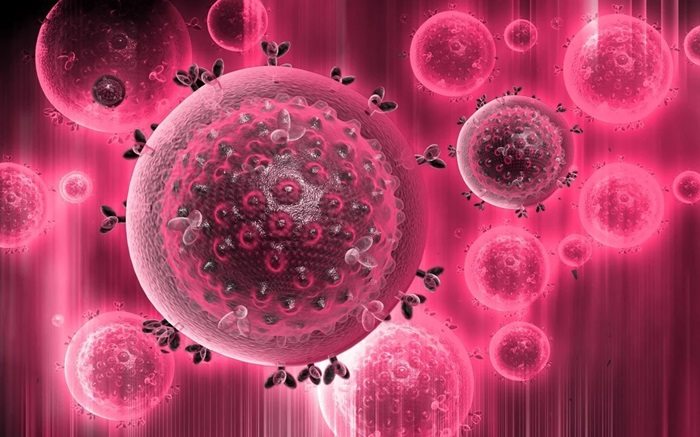An enlarged prostate, known as benign prostatic hyperplasia (BPH), is a common condition among men, especially as they age. The question of whether an enlarged prostate can lead to prostate cancer is a significant concern for many. While BPH and prostate cancer are two distinct conditions, there are some important relationships and considerations to understand.
Understanding the Differences between BPH and Prostate Cancer
Benign Prostatic Hyperplasia (BPH)
BPH is a non – cancerous enlargement of the prostate gland. The prostate gland, which is part of the male reproductive system, gradually increases in size over time. This growth is thought to be related to hormonal changes, specifically an increase in the levels of dihydrotestosterone (DHT), a metabolite of testosterone. As the prostate enlarges, it can compress the urethra, leading to urinary problems such as a weak urinary stream, frequent urination, difficulty starting and stopping urination, and nocturia (waking up at night to urinate).
The cells in BPH are normal prostate cells that have multiplied and caused the gland to expand. This growth pattern is different from the abnormal cell growth seen in cancer.
Prostate Cancer
Prostate cancer, on the other hand, involves the uncontrolled growth of abnormal cells in the prostate gland. These cancer cells can invade nearby tissues and potentially spread to other parts of the body through the bloodstream or lymphatic system. Prostate cancer is often slow – growing, and in many cases, men may have prostate cancer without experiencing any symptoms for years.
The development of prostate cancer is influenced by a combination of genetic and environmental factors. Genetic mutations can cause the prostate cells to lose their normal regulatory mechanisms and start dividing uncontrollably.
The Link between BPH and Prostate Cancer
Shared Risk Factors
There are some shared risk factors between BPH and prostate cancer. Age is a significant factor for both conditions. As men get older, the risk of developing BPH and prostate cancer increases. For example, more than half of men in their 60s have some degree of BPH, and the incidence of prostate cancer also rises with age.
Hormonal factors also play a role. Testosterone and its metabolites are involved in the growth of the prostate gland in both BPH and prostate cancer. However, the way these hormones affect the two conditions is different. In BPH, the hormonal influence is mainly on the growth of normal prostate tissue, while in prostate cancer, it may contribute to the growth and progression of cancerous cells.
Inflammation and Cell Proliferation
BPH can cause inflammation in the prostate gland. Chronic inflammation is thought to play a role in the development of cancer. The inflammatory environment in an enlarged prostate can lead to DNA damage and changes in the normal cell cycle of prostate cells. These changes may increase the risk of developing prostate cancer over time.
Additionally, the increased cell proliferation seen in BPH may create a favorable environment for the development of cancerous mutations. The more cells that are dividing and replicating, the higher the chance that a genetic mutation could occur, which might lead to the development of cancer.
Diagnostic Challenges and Overlap in Symptoms
Symptoms
One of the difficulties in differentiating between BPH and prostate cancer is the overlap in symptoms. Both conditions can cause urinary problems such as a weak stream, frequent urination, and difficulty emptying the bladder. This similarity in symptoms can make it challenging to determine whether a man has BPH, prostate cancer, or both.
However, prostate cancer may also present with other symptoms in more advanced stages, such as blood in the urine or semen, pain in the hips, back, or pelvis, and erectile dysfunction. These symptoms can help doctors suspect prostate cancer, but they are not always present in the early stages.
Diagnostic Tests
To distinguish between BPH and prostate cancer, doctors use a variety of diagnostic tests. The prostate – specific antigen (PSA) test measures the level of PSA in the blood. PSA is a protein produced by the prostate gland, and elevated levels can indicate a problem, such as BPH, prostatitis (inflammation of the prostate), or prostate cancer. However, PSA levels can be elevated in BPH without cancer being present, and some men with prostate cancer may have normal PSA levels.
Digital rectal examination (DRE) is another important tool. During a DRE, the doctor can feel the size, shape, and texture of the prostate gland through the rectum. Abnormalities such as hard lumps or nodules can suggest the presence of prostate cancer, but BPH can also cause the prostate to feel enlarged and smooth. Biopsy is the gold standard for diagnosing prostate cancer. A small sample of prostate tissue is taken and examined under a microscope to look for cancer cells.
Conclusion
An enlarged prostate (BPH) does not directly cause prostate cancer, but there are connections between the two conditions. Shared risk factors, inflammation, and cell proliferation in BPH can potentially increase the risk of developing prostate cancer. Given the overlap in symptoms and the importance of early detection for prostate cancer, it is crucial for men with an enlarged prostate or urinary symptoms to have regular check – ups and appropriate diagnostic tests. By closely monitoring the prostate gland and understanding the relationship between BPH and prostate cancer, healthcare providers can better manage these conditions and improve patient outcomes.
Related topics
Is A Swollen Prostate A Sign Of Cancer?
Can Enlarged Prostate Be Treated With Medication?
What Problems Can Enlarged Prostate Cause?


